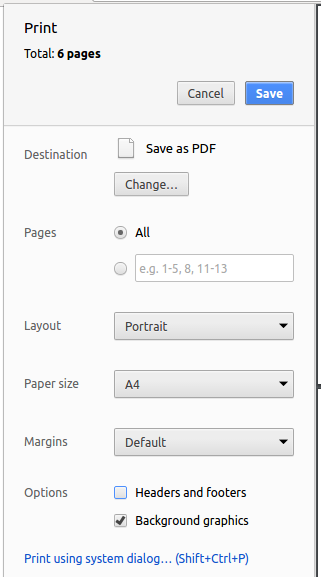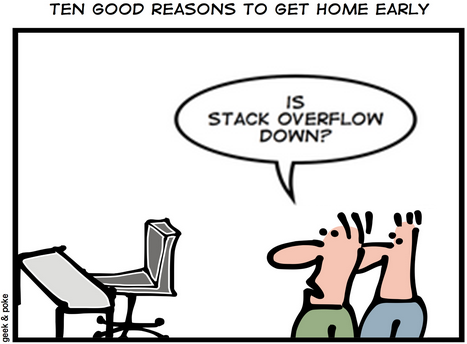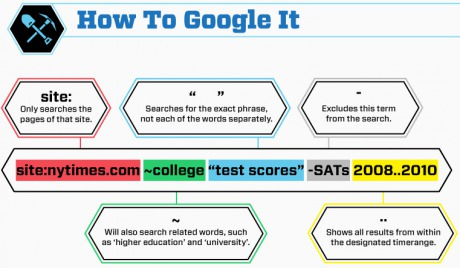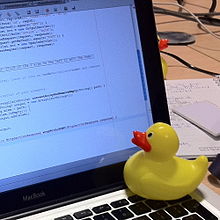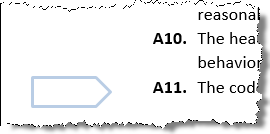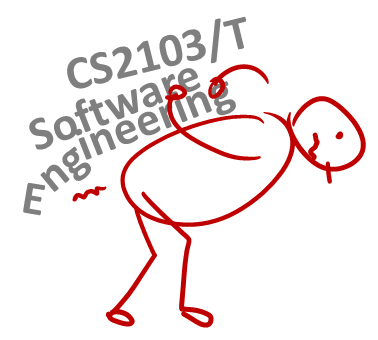Note that project grading is not competitive (not bell curved). CS2103T projects will be assessed separately from CS2103 projects. Given below is the marking scheme.
Total: 45 marks ( 35 individual marks + 10 team marks)
See the sections below for details of how we assess each aspect.
1. Project Grading: Product Design [/ 5 marks]
Evaluates: how well your features fit together to form a cohesive product (not how many features or how big the features are) and how well does it match the target user
Evaluated by:
- tutors (based on product demo and user guide)
- peers from other teams (based on peer testing and user guide)
For reference, here are some grading instructions given to evaluators:
Evaluate the product design based on the User Guide and the actual product behavior.
Target user:
Value to the target user:
In addition, feature flaws reported in the PE will be considered when grading this aspect.
These will be considered feature flaws:
The feature does not solve the stated problem of the intended user i.e., the feature is 'incomplete'
Hard-to-test features
Features that don't fit well with the product
Features that are not optimized enough for fast-typists or target users
2. Project Grading: Implementation [ 10 marks]
2A. Code quality
Evaluates: the quality of the code you have written yourself
Based on: the parts of the code you claim as written by you
Evaluation method: manual inspection by tutors + automated-analysis by a script
For reference, here are some grading instructions given to evaluators:
-
At least some evidence of these (see here for more info)
- logging
- exceptions
- assertions
- defensive coding
-
No coding standard violations e.g. all boolean variables/methods sounds like booleans. Checkstyle can prevent only some coding standard
violations; others need to be checked manually.
-
SLAP is applied at a reasonable level. Long methods or deeply-nested code are symptoms of low-SLAP.
-
No noticeable code duplications i.e. if there multiple blocks of code that vary only in minor ways, try to extract out similarities into one place, especially in test code.
-
Evidence of applying code quality guidelines covered in the module.
2B. Effort
Evaluates: how much value you contributed to the product
Method: Evaluated in two steps.
Step 1: Evaluate the effort for the entire project. This is evaluated by peers who tested your product, and tutors.
For reference, here are some grading instructions given to evaluators:
Quality: Compared to AB3, the quality of this product is,
Effort: Assume the effort required to create AB3 from scratch is 10 in a scale of 0 to 30. How much effort do you estimate the team put in for this project?
-
Do not give a high value just to be nice. Your responses will be used to evaluate your effort estimation skills.
Step 2: Evaluate how much of that effort can be attributed to you. This is evaluated by team members, and tutors.
For reference, here are some grading instructions given to evaluators:
Evaluate the contribution to the product by each team member.
- Count all implementation/testing/documentation work as mentioned in that person's PPP.
- Also look at the actual code written by the person.
3. Project Grading: QA [ 10 marks]
3A. Developer Testing:
Evaluates: How well you tested your own feature
Based on:
- functionality bugs in your work found by others during the PE
- your test code (note our expectations for automated testing)
- There is no requirement for a minimum coverage level. Note that in a production environment you are often required to have at least 90% of the code covered by tests. In this project, it can be less. The less coverage you have,
the higher the risk of regression bugs, which will cost marks if not fixed before the final submission.
- You must write some tests so that we can evaluate your ability to write tests.
- How much of each type of testing should you do? We expect you to decide. You learned different types of testing and what they try to achieve. Based on that, you should decide how much of each type is required. Similarly, you can
decide to what extent you want to automate tests, depending on the benefits and the effort required.
These are considered functionality bugs:
Behavior differs from the User Guide
A legitimate user behavior is not handled e.g. incorrect commands, extra parameters
Behavior is not specified and differs from normal expectations e.g. error message does not match the error
3B. System/Acceptance Testing:
Evaluates: How well you can system-test/acceptance-test a product
Based on: bugs you found in the Practical Exam. In addition to functionality bugs, you get credit for reporting documentation bugs and
feature flaws.
Notes on how marks are calculated based on PE product testing
- Of 3A and 3B above, the one you do better will be given a 70% weight and the other a 30% weight so that your total score is driven by your strengths rather than weaknesses.
- Bugs rejected by the dev team, if the rejection is approved by the teaching team, will not be affect marks of the tester or the developer.
- The penalty/credit for a bug varies based on,
- The severity of the bug:
severity.High > severity.Medium > severity.Low > severity.VeryLow
- The type of the bug:
type.FunctionalityBug > type.DocumentationBug > type.FeatureFlaw
- The penalty for a bug is divided equally among assignees.
- The developers are not penalized for the duplicate bug reports they received but the testers earn credit for the duplicate bug reports they submitted as long as the duplicates are not submitted by the same tester.
-
Obvious bugs earn less credit for the tester and slightly more penalty for the developer.
- If the team you tested has a low bug count i.e., total bugs found by all testers is low, we will fall back on other means (e.g., performance in PE dry run) to calculate your marks for system/acceptance
testing.
- Your marks for developer testing depends on the bug density rather than total bug count. Here's an example:
n bugs found in your feature; it is a difficult feature consisting of lot of code → 4/5 marksn bugs found in your feature; it is a small feature with a small amount of code → 1/5 marks
- You don't need to find all bugs in the product to get full marks. For example, finding half of the bugs of that product or 4 bugs, whichever the lower, could earn you full marks.
- Excessive incorrect downgrading/rejecting/
duplicate-flagging, if deemed an unethical attempt to game the system, may be penalized.
4. Project Grading: Documentation [ 10 marks]
Evaluates: your contribution to project documents
Method: Evaluated in two steps.
Step 1: Evaluate the whole UG and DG. This is evaluated by peers who tested your product, and tutors.
For reference, here are some instructions given to evaluators:
UG: Compared to AB3, the quality of this UG is,
Step 2: Evaluate how much of that effort can be attributed to you. This is evaluated by team members, and tutors.
For reference, here are some grading instructions given to evaluators:
Q: Evaluate the contribution to the UG by each team member. Note that your evaluation must correspond to RepoSense data and the claims made by the PPP of each member.
Q: Evaluate the contribution to the DG by each team member.
Q: Which type of these UML diagrams in the DG did you personally add (or significantly modified)?
In addition, UG and DG bugs you received in the PE will be considered for grading this component.
These are considered UG bugs (if they hinder the reader):
Not enough visuals e.g., screenshots/diagrams
The visuals are not well integrated to the explanation.
The visuals are unnecessarily repetitive e.g., same visual repeated with minor changes.
Not enough examples e.g., sample inputs/outputs.
The explanation is too brief or unnecessarily long.
The information is hard to understand for the target audience. e.g., using terms the reader might not know
The document looks messy, or not well-formatted.
These are considered DG bugs (if they hinder the reader):
These are considered UG bugs (if they hinder the reader):
Not enough visuals e.g., screenshots/diagrams
The visuals are not well integrated to the explanation.
The visuals are unnecessarily repetitive e.g., same visual repeated with minor changes.
Not enough examples e.g., sample inputs/outputs.
The explanation is too brief or unnecessarily long.
The information is hard to understand for the target audience. e.g., using terms the reader might not know
The document looks messy, or not well-formatted.
UML notation incorrect or not compliant with the notation covered in the module.
Some other type of diagram used when a UML diagram would have worked just as well.
The diagram used is not suitable for the purpose it is used.
The diagram is too complicated.
Excessive use of code e.g., a large chunk of code is cited when a smaller extract of would have sufficed.
5. Project Grading: Project Management [ 5 + 5 = 10 marks]
5A. Process:
Evaluates: How well you did in project management related aspects of the project, as an individual and as a team
Based on: tutor/bot observations of project milestones and GitHub data
Milestones need to be reached the midnight before of the tutorial for it to be counted as achieved. To get a good grade for this aspect, achieve at least 60% of the recommended milestone progress.
Other criteria:
- Good use of GitHub milestones
- Good use of GitHub release mechanism
- Good version control, based on the repo
- Reasonable attempt to use the forking workflow
- Good task definition, assignment and tracking, based on the issue tracker
- Good use of buffers (opposite: everything at the last minute)
- Project done iteratively and incrementally (opposite: doing most of the work in one big burst)
5B. Team-tasks:
Evaluates: How much you contributed to team-tasks
Based on: peer evaluations, tutor observations
To earn full marks, you should have done a fair share of the team tasks. You can earn bonus marks by doing more than your fair share.
Relevant: [Admin tP Scope → Examples of team-tasks
]
Here is a non-exhaustive list of team-tasks:
- Necessary general code enhancements e.g.,
- Work related to renaming the product
- Work related to changing the product icon
- Morphing the product into a different product
- Setting up the GitHub, Travis, AppVeyor, etc.
- Maintaining the issue tracker
- Release management
- Updating user/developer docs that are not specific to a feature e.g. documenting the target user profile
- Incorporating more useful tools/libraries/frameworks into the product or the project workflow (e.g. automate more aspects of the project workflow using a GitHub plugin)


